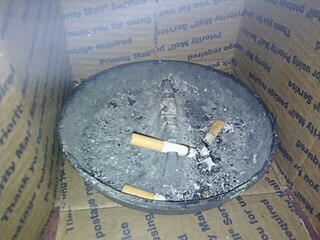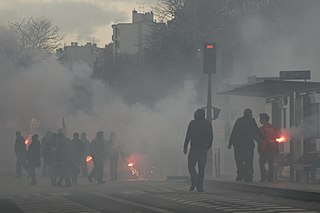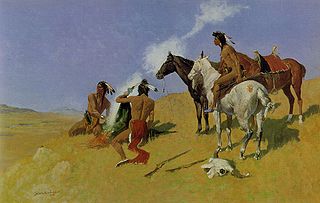 W
WSmoke is a collection of airborne particulates and gases emitted when a material undergoes combustion or pyrolysis, together with the quantity of air that is entrained or otherwise mixed into the mass. It is commonly an unwanted by-product of fires, but may also be used for pest control (fumigation), communication, defensive and offensive capabilities in the military, cooking, or smoking. It is used in rituals where incense, sage, or resin is burned to produce a smell for spiritual or magical purposes. It can also be a flavoring agent and preservative.
 W
WAn aspirating smoke detector (ASD) is a system used in active fire protection, consisting of a central detection unit which draws air through a network of pipes to detect smoke. The sampling chamber is based on a nephelometer that detects the presence of smoke particles suspended in air by detecting the light scattered by them in the chamber. ASDs can typically detect smoke before it is visible to the naked eye.
 W
WA bee smoker is a device used in beekeeping to calm honey bees. It is designed to generate smoke from the smouldering of various fuels, hence the name.
 W
WA chimney is an architectural ventilation structure made of masonry, clay or metal that isolates hot toxic exhaust gases or smoke produced by a boiler, stove, furnace, incinerator or fireplace from human living areas. Chimneys are typically vertical, or as near as possible to vertical, to ensure that the gases flow smoothly, drawing air into the combustion in what is known as the stack, or chimney effect. The space inside a chimney is called the flue. Chimneys are adjacent to large industrial refineries, fossil fuel combustion facilities or part of buildings, steam locomotives and ships.
 W
WColored smoke is a kind of smoke created by an aerosol of small particles of a suitable pigment or dye.
 W
WA cowl is a usually hood-shaped covering used to increase the draft of a chimney and prevent backflow. The cowl, usually made of galvanized iron, is fitted to the chimney pot to prevent wind blowing the smoke back down into the room below. Undoubtedly named after the resemblance of many designs to the cowl garment worn by monks, they have been in use for centuries.
 W
WA fog machine, fog generator, or smoke machine is a device that emits a dense vapor that appears similar to fog or smoke. This artificial fog is most commonly used in professional entertainment applications, but smaller, more affordable fog machines are becoming common for personal use. Fog machines can also be found in use in a variety of industrial, training, and some military applications. Typically, fog is created by vaporizing proprietary water and glycol-based or glycerin-based fluids or through the atomization of mineral oil. This fluid vaporizes or atomizes inside the fog machine. Upon exiting the fog machine and mixing with cooler outside air the vapor condenses, resulting in a thick visible fog.
 W
WFumage is a surrealist art technique popularized by Wolfgang Paalen in which impressions are made by the smoke of a candle or kerosene lamp on a piece of paper or canvas. Paalen´s first Fumage Dictated by a Candle was presented 1936 in the International Surrealist Exhibition in London. In the same year Paalen painted his first oil based on the fumage, "Pays interdit". Several other Surrealists as Roberto Matta, but also Salvador Dalí later utilized the technique, Dali calling the technique "sfumato". The technique has been utilized by artists including Bimal Banerjee, Adam Blakemore, Alberto Burri, Burhan Doğançay, Jiri Georg Dokoupil, Hugh Parker Guiler, Yves Klein, Antonio Muñiz, and Otto Piene.
 W
WHexachloroethane, also known as perchloroethane (PCA) is the organochlorine compound with the formula (CCl3)2. It is white solid at room temperature with a camphor-like odor. It has been used by the military in smoke compositions, such as base-eject smoke munitions (smoke grenades).
 W
WMagic smoke is a humorous name for the caustic smoke produced by severe electrical over-stress of electronic circuits or components, causing overheating and accompanying release of smoke. The smoke typically smells of burning plastic and other chemicals. The color of the smoke depends on which component is overheating, but it is commonly white or grey. Minor overstress eventually results in component failure, but without pyrotechnic display or release of smoke.
 W
WPea soup fog is a very thick and often yellowish, greenish or blackish fog caused by air pollution that contains soot particulates and the poisonous gas sulphur dioxide. This very thick smog occurs in cities and is derived from the smoke given off by the burning of soft coal for home heating and in industrial processes. Smog of this intensity is often lethal to vulnerable people such as the elderly, the very young and those with respiratory problems. The result of these phenomena was commonly known as a London particular or London fog; in a reversal of the idiom, "London particular" became the name for a thick pea and ham soup.
 W
WThe Ringelmann scale is a scale for measuring the apparent density or opacity of smoke. It was developed by a French professor of agricultural engineering Maximilien Ringelmann of La Station d'Essais de Machines in Paris, who first specified the scale in 1888.
 W
WSidestream smoke is smoke which goes into the air directly from a burning cigarette, cigar, or smoking pipe. Sidestream smoke is the main component of second-hand smoke (SHS), also known as Environmental Tobacco Smoke (ETS) or passive smoking. The chemical constituents of sidestream smoke are different from those of directly inhaled ("mainstream") smoke. Sidestream smoke has been classified as a Class A carcinogen by the U.S. Environmental Protection Agency.
 W
WA smoke grenade is a canister-type grenade used as a signaling device, target or landing zone marking device, or as a screening device for unit movements.
 W
WA smoke hood is a hood is a translucent airtight bag seals around the head of the wearer while an air filter held in the mouth connects to the outside atmosphere and is used to breathe. Smoke hoods are intended to protect victims of fire from the effects of smoke inhalation. A smoke hood is a predecessor to the gas mask. The first modern smoke hood design was by Garrett Morgan and patented in 1912.
 W
WA smoke ring is a visible vortex ring formed by smoke in a clear atmosphere.
 W
WA smoke screen is smoke released to mask the movement or location of military units such as infantry, tanks, aircraft or ships.
 W
WThe smoke signal is one of the oldest forms of long-distance communication. It is a form of visual communication used over a long distance. In general smoke signals are used to transmit news, signal danger, or gather people to a common area.
 W
WSmoke testing refers to various classes of tests of systems, usually intended to determine whether they are ready for more robust testing. The expression probably was first used in plumbing in referring to tests for the detection of cracks, leaks or breaks in closed systems of pipes.
 W
WA smokebox is one of the major basic parts of a steam locomotive exhaust system. Smoke and hot gases pass from the firebox through tubes where they pass heat to the surrounding water in the boiler. The smoke then enters the smokebox, and is exhausted to the atmosphere through the chimney. Early locomotives had no smokebox and relied on a long chimney to provide natural draught for the fire but smokeboxes were soon included in the design for two main reasons. Firstly and most importantly, the blast of exhaust steam from the cylinders, when directed upwards through an airtight smokebox with an appropriate design of exhaust nozzle, effectively draws hot gases through the boiler tubes and flues and, consequently, fresh combustion air into the firebox. Secondly, the smokebox provides a convenient collection point for ash and cinders ("char") drawn through the boiler tubes, which can be easily cleaned out at the end of a working day. Without a smokebox, all char must pass up the chimney or will collect in the tubes and flues themselves, gradually blocking them.
 W
WSmoked glass is glass held in the smoke of a candle flame such that one surface of the sheet of glass is covered in a layer of smoke residue. The glass is then used as a medium for recording pen traces in scientific instruments.
 W
WA smoking ceremony is an ancient custom among some Aboriginal Australians that involves smouldering various native plants to produce smoke. This herbal smoke is believed to have cleansing properties and the ability to ward off bad spirits. In traditional, spiritual culture, smoking ceremonies have been performed following either childbirth or initiation rites involving circumcision. More recently, elements of smoking ceremonies have been incorporated into Welcome to Country performances.
 W
WThe M3 Stuart, officially Light Tank, M3, was an American light tank of World War II. An improved version entered service as M5. It was supplied to British and other Commonwealth forces under lend-lease prior to the entry of the U.S. into the war. Thereafter, it was used by U.S. and Allied forces until the end of the war.
 W
WThe Tyndall effect is light scattering by particles in a colloid or in a very fine suspension. Also known as Tyndall scattering, it is similar to Rayleigh scattering, in that the intensity of the scattered light is inversely proportional to the fourth power of the wavelength, so blue light is scattered much more strongly than red light. An example in everyday life is the blue colour sometimes seen in the smoke emitted by motorcycles, in particular two-stroke machines where the burnt engine oil provides these particles.